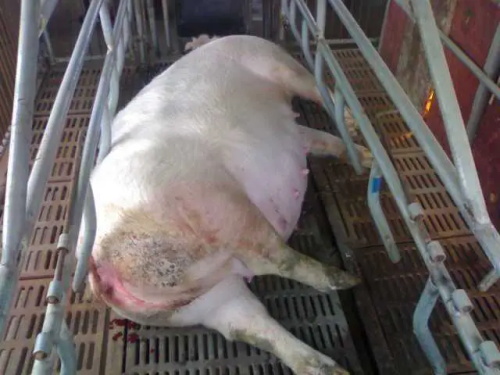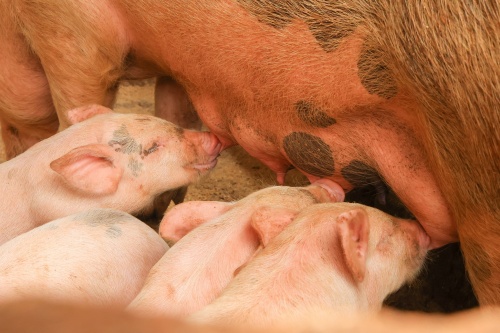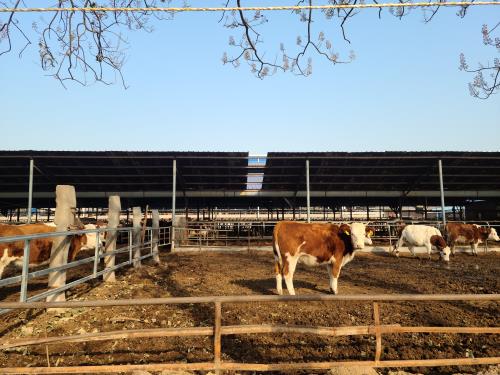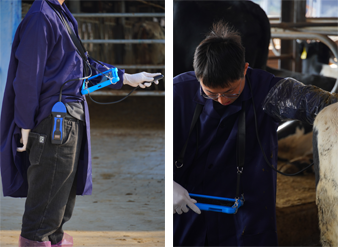For commercial pig producers around the world, reproductive success is a critical driver of profitability. A single case of sow miscarriage—also known as abortion—can result in significant economic loss through reduced litter size, extended non-productive days, and increased veterinary costs. Understanding the root causes of abortion in sows is not just a matter of treating symptoms; it’s essential for prevention, herd health, and sustainability.

In this article, I’ll explore the most common causes of miscarriage in sows from both veterinary and management perspectives, incorporating current international research and on-farm practices. From infectious diseases to environmental stress, let’s break down what every pig farmer should know to protect their herd.
Recognizing the Signs of Abortion in Sows
Before addressing causes, it’s important to understand what abortion looks like in a swine context. A sow is considered to have aborted if she loses her litter after the 35th day of gestation but before the expected farrowing date. Typical signs include:
Premature expulsion of fetuses or fetal tissues
Vaginal discharge, sometimes with a foul odor
Return to estrus unexpectedly
Lowered appetite and general signs of discomfort
Early detection allows for diagnostic testing and isolation if needed. However, prevention starts with understanding the underlying factors.
Infectious Causes: The Leading Culprits
Infectious agents—especially viruses and bacteria—are the most common causes of abortion in sows worldwide. Here are the most notable ones:
1. Porcine Reproductive and Respiratory Syndrome Virus (PRRSV)
One of the most economically devastating diseases in modern swine production, PRRSV affects both sows and piglets. It can cross the placenta, causing fetal death, mummification, or abortion, particularly in the last trimester.
Transmission: Direct contact, aerosol, contaminated equipment
Prevention: Vaccination, strict biosecurity, and early detection using PCR diagnostics
2. Porcine Parvovirus (PPV)
Unlike PRRSV, parvovirus causes reproductive failure without outward signs of illness in the sow. Infected fetuses may be resorbed, mummified, or stillborn.
High-risk group: Gilts (first-time breeders)
Control: Routine vaccination of gilts before first mating
3. Leptospirosis
This bacterial disease affects sows by invading the kidneys and reproductive tract, often resulting in late-term abortion or birth of weak piglets.
Transmission: Contact with contaminated urine, water, or rodents
Management: Vaccination, rodent control, and clean water supply
4. Brucellosis
Although less common in commercial systems, Brucella suis can cause abortions and infertility. Zoonotic in nature, it also poses risks to farm workers.
Control: Eradication programs and culling infected animals
5. Mycotoxins
Though not a living pathogen, mycotoxins are toxic metabolites produced by fungi in moldy feed. Zearalenone, in particular, mimics estrogen and interferes with the reproductive system, sometimes causing abortion.
Prevention: Proper feed storage, regular testing, and use of mycotoxin binders

Non-Infectious Causes: Equally Important
Not all miscarriages are caused by pathogens. Many abortions result from stress, poor nutrition, or management issues.
1. Heat Stress
Elevated temperatures—especially in late gestation—can disrupt hormonal balance, leading to fetal death. Heat stress is a global concern, particularly in regions with poor ventilation or rising summer temperatures.
Solution: Cooling systems, ventilation, shade, and scheduling farrowing in cooler months
2. Nutritional Deficiencies
Inadequate intake of essential nutrients such as selenium, vitamin E, or certain amino acids can impair placental development or fetal viability.
Advice: Balanced feeding plans developed in consultation with swine nutritionists
3. Physical Trauma
Aggression from pen mates, overcrowding, or poor handling can result in trauma that leads to pregnancy loss.
Management: Group sows based on parity and temperament, avoid mixing unfamiliar sows in late gestation
4. Hormonal Imbalances
Disorders in progesterone levels—often caused by stress or metabolic disturbances—can lead to the failure of pregnancy maintenance. Progesterone is essential for maintaining uterine tone and fetal attachment.
Biosecurity and Farm Management Practices
International experience—particularly from North American and European farms—shows that improved biosecurity is one of the most effective tools in reducing abortion rates. This includes:
Quarantine protocols for new animals
Regular disinfection of pens and farrowing areas
Limiting visitor access and enforcing clothing change rules
Scheduled vaccination programs with up-to-date records
Veterinarians often recommend combining good biosecurity with regular reproductive monitoring. Many farms now use ultrasonography—especially portable B-mode machines—to monitor pregnancy progression and detect problems early.

The Role of Ultrasound in Monitoring Pregnancy Health
Portable ultrasound machines have revolutionized pregnancy diagnosis and reproductive monitoring in swine herds. With early and real-time visibility into the sow’s uterus, farmers and veterinarians can:
Confirm pregnancy as early as 21 days post-breeding
Assess fetal viability and count embryos
Detect uterine abnormalities such as fluid accumulation or fetal mummification
Many progressive farms around the world are now adopting tools like B-mode veterinary ultrasound scanners, which offer high-resolution imaging without causing stress to the animal. This technology helps in early decision-making—whether that’s initiating treatment, isolating affected sows, or optimizing feeding plans.
Case Study: Reducing Abortions Through Management – A European Perspective
A study conducted by the University of Ghent in Belgium found that integrating ultrasound imaging with nutritional adjustments and strict biosecurity protocols reduced the abortion rate in a 300-sow herd from 12% to 5% within two reproductive cycles.
Key steps included:
Monthly ultrasound checks using real-time imaging
Switching to a mycotoxin-free diet
Introducing automated cooling and ventilation systems
This real-world example reinforces the importance of integrating diagnostics, technology, and management for reproductive success.
Conclusion: Preventing Abortion Requires a Holistic Strategy
Miscarriage in sows is a multifactorial issue. While infectious diseases like PRRS and PPV dominate the headlines, non-infectious factors such as heat stress, poor diet, and trauma are equally significant. Preventing abortion requires a multi-pronged approach:
Robust vaccination and biosecurity programs
High-quality, balanced nutrition
Regular monitoring with tools like ultrasound
Maintaining low-stress environments
Understanding and addressing these causes from both a veterinary and management angle is essential for today’s global pig producers. Whether you operate in Europe, Asia, or the Americas, one universal truth remains: reproductive efficiency is the cornerstone of profitable pig farming.
By staying informed, investing in herd monitoring, and adopting best practices, you can safeguard your herd against avoidable losses and build a more resilient production system.
References
Zimmerman, J. et al. (2019). Diseases of Swine, 11th Edition. Wiley-Blackwell.
European Food Safety Authority. (2023). “Animal Diseases Causing Reproductive Failure in Pigs.” https://www.efsa.europa.eu/en
USDA APHIS. (2022). “Swine Health Monitoring Project.” https://www.aphis.usda.gov
Ghent University – Faculty of Veterinary Medicine. (2021). "Reproductive Losses in Sows: Field Studies and Strategies."
Iowa State University. (2023). “Porcine Reproductive and Respiratory Syndrome.” https://www.cfsph.iastate.edu
Pig333 Global Pig Portal. “Reproductive Pathology in Swine.” https://www.pig333.com
link: https://www.bxlimage.com/nw/1253.html
tags:








